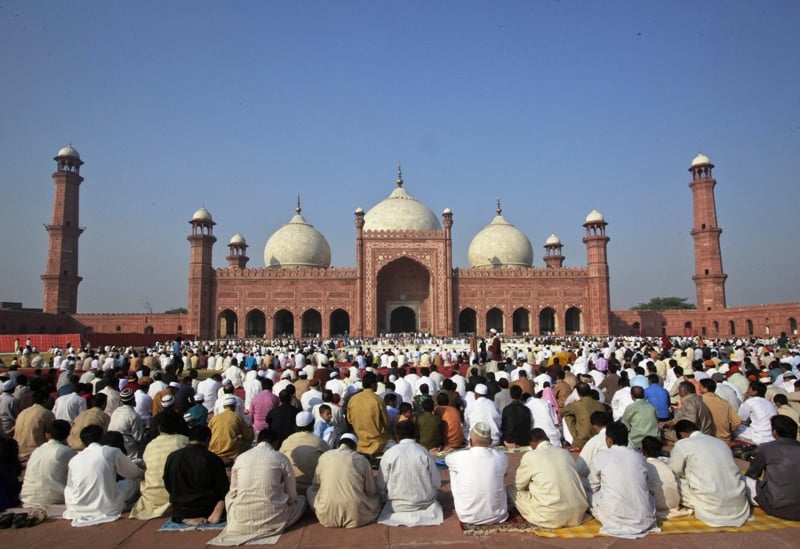
Owing largely to the conditions placed on the government by the International Monetary Fund, the finance ministry eliminated many subsidies and announced its intention to reduce others. Crucially, it announced almost no new subsidies, much to the chagrin of the heads of trade associations and journalistic commentators. In fairness, the government did not make the case for its policies effectively, neither in the budget speech nor in any subsequent communications. It is a case worth making.
As has been stated previously on these pages, subsidies do nothing to help people improve the quality of their lives and keeps them perennially dependent on the government for support. Infrastructure development, on the other hand, builds things such as roads, railways, schools and bridges that connect people and make commerce possible. This last point is especially pertinent and deserves to be highlighted. The lack of infrastructure creates bottlenecks and costs the economy in terms of lost opportunities and an increased cost of doing business.
The cost of subsidies
Subsidies are politically popular, often being used by politicians as a thinly disguised, legal form of bribing the electorate. So well known is this fact that even a military regime, such as that of Gen Musharraf, used this technique to try to buy off the electorate before the 2008 election. Unfortunately, they did so largely by monetising the national debt, economists’ jargon for saying that they simply printed money to pay their bills, setting off a domino chain of economic disasters.
Printing money causes the money supply to increase without a commensurate increase in demand. This caused inflation to spike sharply, reaching an all-time high of 25.8% in August 2008. The sharp spike in inflation caused interest rates to follow suit. Given the fact that most debt in Pakistan is negotiated at variable rates, most borrowers faced a massive rise in their financing costs, causing many of them to default. This, in turn, caused banks to face huge losses on their loan portfolios and for a few dark weeks in late 2008, even the largest banks refused to lend money to each other on the interbank market. With credit drying up, the economy virtually ground to a halt.
So what does this have to do with subsidies? The government simply does not have enough money to pay for its bills. Faced with a trade-off between subsidies and spending on infrastructure, the government would be far better off choosing to spend on infrastructure. Even if the government ended up creating the same inflationary pressures as a result of its infrastructure spending, at least it is creating the capacity for further economic growth in the country in the process.
Power & transportation: the necessary expense
That spending money on infrastructure is a good thing is a self-evident fact. What is somewhat less clear is that it helps far more that any subsidy ever could. This is best illustrated with an example.
At a nominal GDP of about $180 billion, Pakistan is the 46th largest economy in the world, according to the World Bank. The country has the sixth largest population in the world and has an internal market large enough to justify large investments. For example, according to the Small & Medium Enterprise Development Authority (SMEDA), the retail and wholesale segment of the Pakistani economy is a $36 billion market. So why are there no large national retail or wholesale chains?
The two biggest reasons are the lack of a transportation infrastructure and a reliable power supply. For example, Engro Foods – the food products subsidiary of the Engro Corporation – has created a large, nationwide, integrated supply chain to manage the logistics of its raw materials supply. Yet the transportation infrastructure of the rural areas of the country is so poor that the cost of its logistics takes up close to 18 per cent of its revenues, according to people familiar with the matter. This is one of the major reasons why, despite having close to Rs15 billion in revenues, the company still made a loss of over Rs400 million.
Most companies report similar problems when it comes to creating a national supply chain. And the national economy suffers for it. Sticking with the example of the dairy industry, over 40 per cent of the milk produced in Pakistan is wasted, according to the Punjab government. Only about 30 per cent is sold at all and less than 3 per cent is packaged. Given the fact that milk packaging companies pay more than the ordinary milk shop, if the economy moved to a much larger percentage of packaged milk, the consequences for the agricultural workforce would be immeasurably positive.
Only the local market can give true “value addition”
Owing to the distribution problems highlighted above, most manufacturers in Pakistan tend to discount the possibilities of selling to the local market. While the market for food may be worth $36 billion, not all of it is easily accessible, and given the lack of cold storage chains and the perishable nature of foods, most of its not serviceable by anything other than the smallest of localised corner stores.
Because firms cannot explore the local market, they are confined to seeking volumes in the export market. Yet the global market is far harder to penetrate without localised knowledge. This is why most textile manufacturers are restricted to manufacturing products for foreign brands. Most of the retail margins are captured by the owner of the brand name, not the owner of the manufacturing facility. And it is far easier to develop a brand locally and then export it rather than creating a global brand from scratch.
If the government is serious about promoting Pakistani industry and exports, it should do so by developing the infrastructure for a local market. If it must do so by ignoring subsidies, then so be it. In the long run, that will be the best form of “relief” to the people of Pakistan.
Published in The Express Tribune, June 21st, 2010.























COMMENTS
Comments are moderated and generally will be posted if they are on-topic and not abusive.
For more information, please see our Comments FAQ